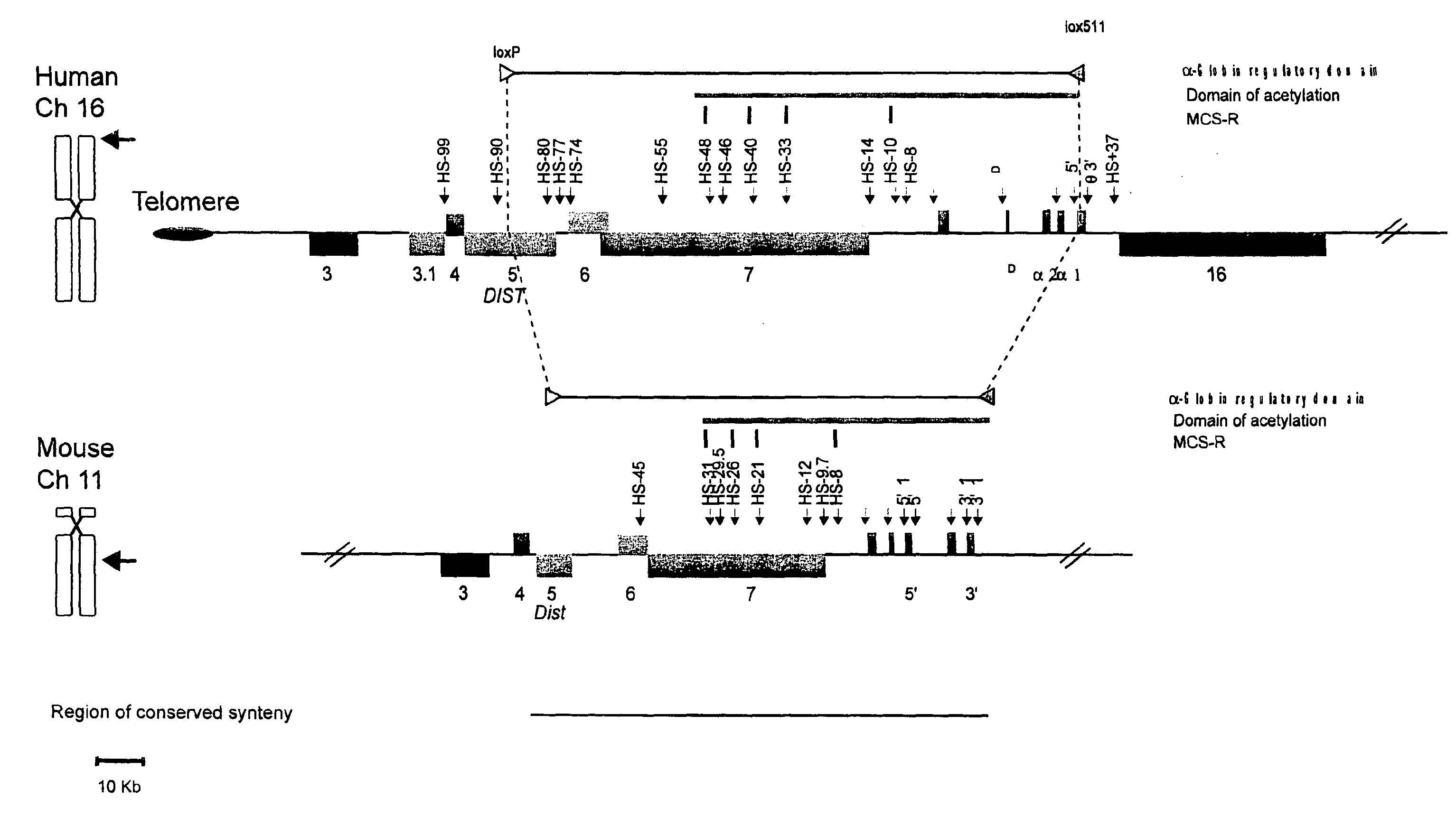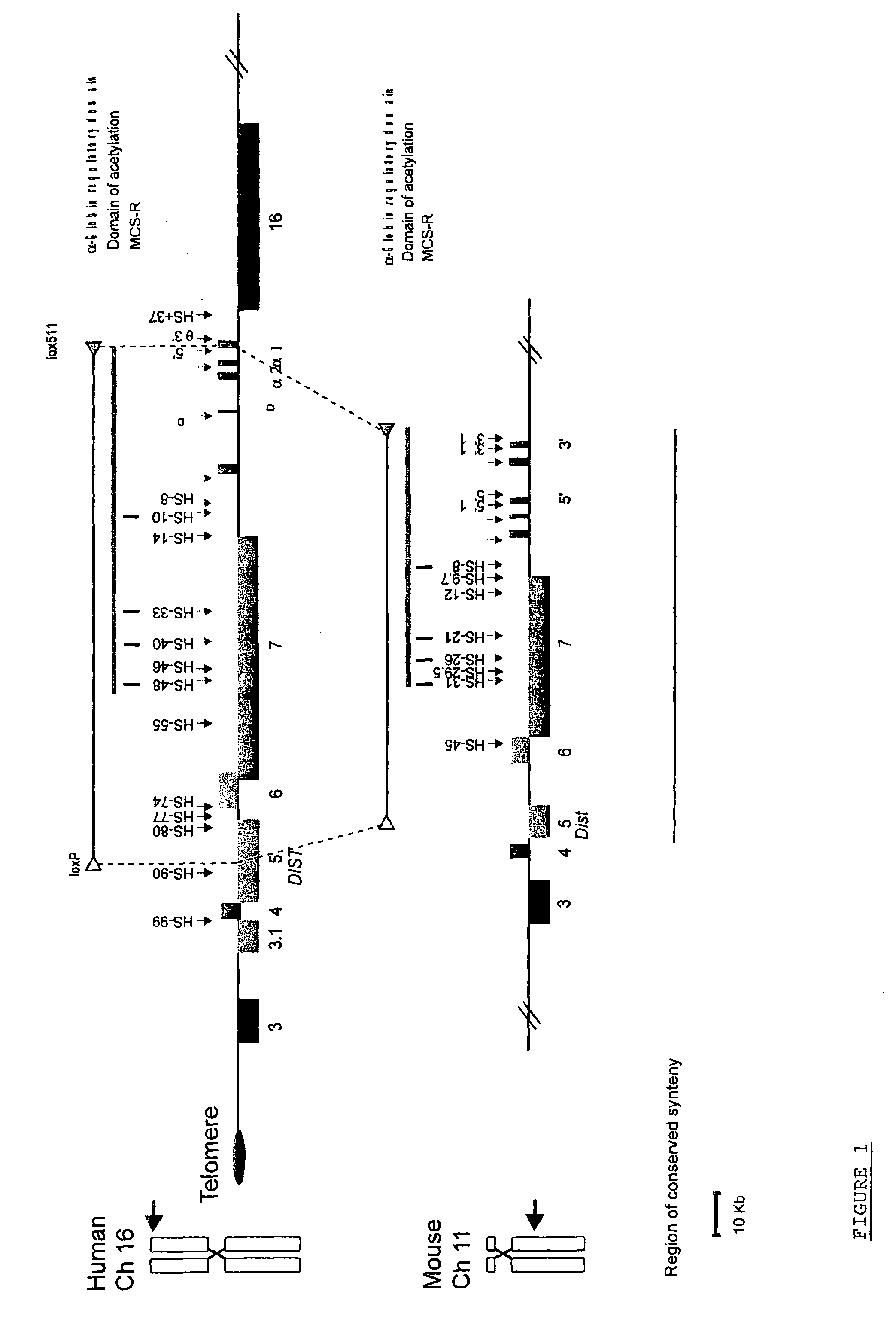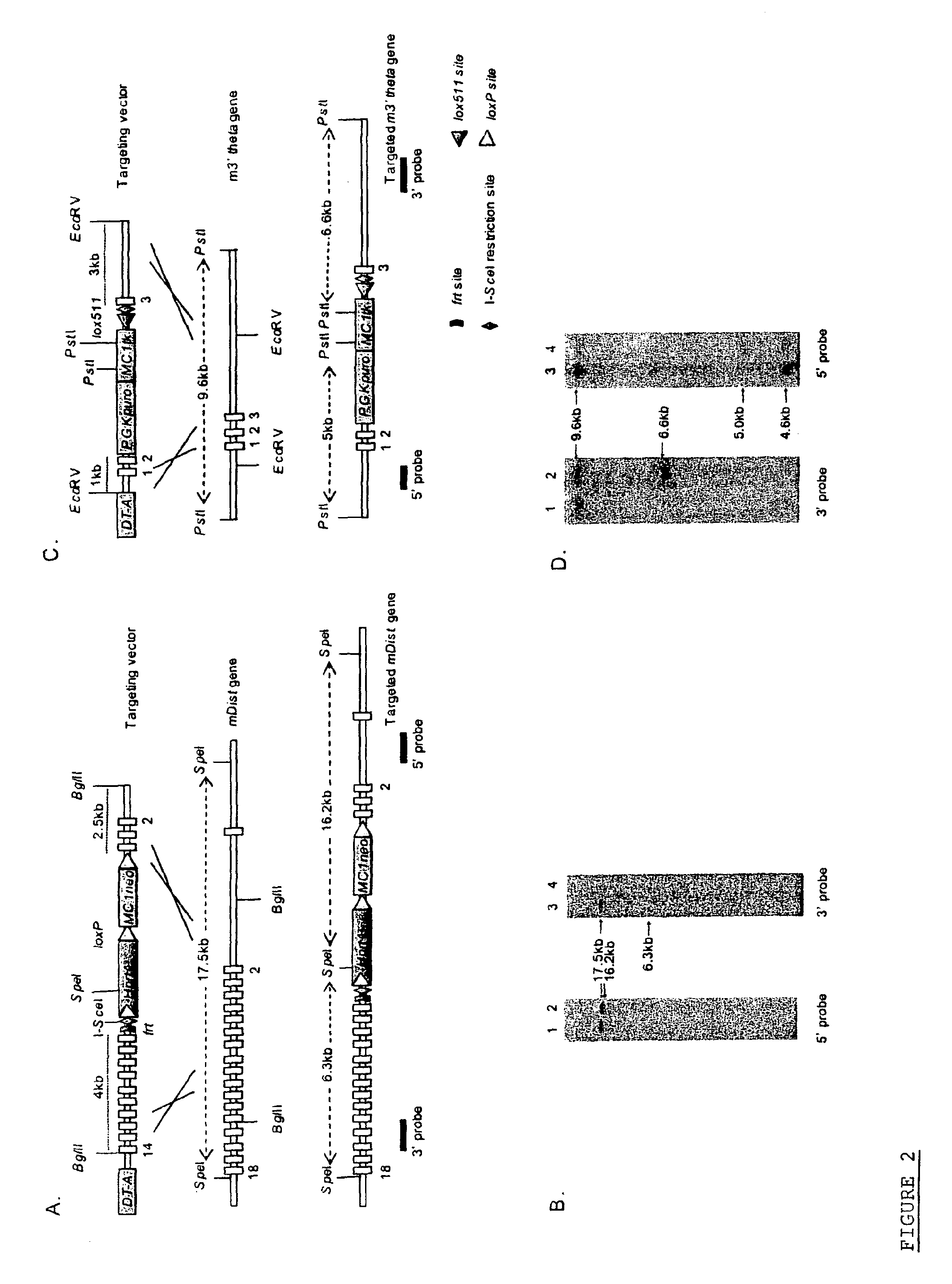Humanisation of animals
a technology of transgenes and animals, applied in the field of humanisation of animals, can solve the problems of limited studies of how human genes are normally regulated, the effect of human genetic disease mutations being limited, and small transgenes often do not contain all the cis-acting elements required, so as to facilitate functional analysis of genes and improve the accuracy of animal models
- Summary
- Abstract
- Description
- Claims
- Application Information
AI Technical Summary
Benefits of technology
Problems solved by technology
Method used
Image
Examples
Embodiment Construction
[0054]The present invention will now be further described by way of example and with reference to the figures which show:
[0055]FIG. 1. The chromosomal localization and organization of the human and mouse a globin clusters. The human cluster (16p13.3) is located close to the telomere (oval) whereas the mouse cluster lies at an interstitial chromosomal position (11qA4). The globin genes are shown as labelled red boxes. Other human genes and their mouse orthologues are annotated as previously (Flint et al., 1997) 3=IL9RP3, 3.1=POLR3K; 4=c16orf33; 5=C16orf8 (Dist); 6=MPG; 7=C16orf35 and 16=LUC7L and shown as coloured boxes encoded by the top (above the line, 5′ to 3′ left to right) or bottom (below the line, 5′ to 3′ right to left) DNA strand. Note that two genes (POLR3K and αD) are found only in the human cluster. No pseudogenes are shown apart from IL9RP3, which is a pseudogene in man but a functional gene in mouse. A grey line above each cluster represents the domain of acetylation t...
PUM
| Property | Measurement | Unit |
|---|---|---|
| size | aaaaa | aaaaa |
| sizes | aaaaa | aaaaa |
| restriction fragment sizes | aaaaa | aaaaa |
Abstract
Description
Claims
Application Information
 Login to View More
Login to View More - R&D
- Intellectual Property
- Life Sciences
- Materials
- Tech Scout
- Unparalleled Data Quality
- Higher Quality Content
- 60% Fewer Hallucinations
Browse by: Latest US Patents, China's latest patents, Technical Efficacy Thesaurus, Application Domain, Technology Topic, Popular Technical Reports.
© 2025 PatSnap. All rights reserved.Legal|Privacy policy|Modern Slavery Act Transparency Statement|Sitemap|About US| Contact US: help@patsnap.com



